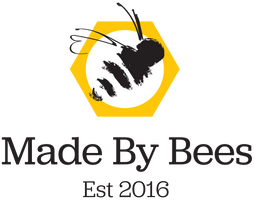
Honeybees, like many other insects, like to keep a clean home.
Not only does it allow them to work more effectively but it also protects them from diseases. Scientists have studied this for years and have termed it ‘hygienic behaviour’. Hygienic behaviour is defined by two traits: (1) when workers sense a larva is dead and remove the cell capping to check, and (2) when the workers remove said dead larva and clean out the cell. These ‘hygienic traits’ are genes passed down from the queen bee to all of her offspring. Therefore, if a queen bee has bad hygienic traits, so will the rest of her colony. Keeping a clean hive stops the spread of diseases that can either spread between cells or within the cell if it is not properly cleaned out before a new larva is laid there.
Honeybee Health is essential for beekeepers around the globe.
Maintaining healthy honeybee populations ensures the pollination of crops and wildflowers, as well as the honey and wax products that many of us use. To record and track how well honeybees are doing, scientists have created a method called Hygienic Testing, which tests the level of hygienic behaviour of a colony. We are lucky enough in Ontario to have the Ontario Beekeepers Association, but even more so to have the Technology Transfer Program (a branch of the OBA), which tests the hygienic behaviour of colonies across the province.
The Technology Transfer Program, commonly called the TTP, checks on the health status of colonies within the Ontario breeding program. This ensures that healthy queens are going out to all the beekeepers not only in the province but also across Canada. As mentioned, the health of the colony is determined by the hygienic traits of its queen bee. My daughter was fortunate to have a summer job last year doing testing for the TTP, and so I learned a lot from her!
 Hygienic Testing Process
Hygienic Testing Process
The hygienic testing itself requires a brood frame from every colony in a yard to have liquid nitrogen poured over a patch of sealed brood. The frames are then returned to the hive and checked on 24 hours later. On the return visit, the liquid nitrogen will have left dead patches of larva cells. The test is whether the worker bees have either uncapped the dead larva cells and/or removed the dead larva and cleaned the cells. The ideal result is that the colony would have removed and cleaned all the damaged cells. This would indicate a healthy, hygienic colony which would be more resistant to mites or diseases as the colony recognizes the issues and deals with it swiftly. In the case that the dead cells have not been touched, the beekeeper should think about requeening that hive, to ensure success later on.
Pollinators are feeling the summer heat

With the hot, dry weather we have been experiencing throughout the province, our pollinators are feeling thirsty too. Setting up a bee (and other pollinators) friendly watering station is easy to do with materials you probably already have around the house and yard!
What You'll Need:
- Shallow container (an old pie dish or pan, a shallow birdbath, or a gardening pot base are all great examples)
- Small stones or glass beads
The water level should sit just below, or level with the pebbles so that bees have plenty of places to stand while quenching their thirst. Bees can easily drown in deep water. Place the watering station in your garden near some flowers and they will find it in no time! Remember to keep it topped up with fresh water, and enjoy watching!
Add Some Honeybees to Your Kitchen
Check out some of the great bee patterns we have in stock for our beeswax wraps! Order Priscilla’s Pick of the Day on our website, and leave a comment at checkout telling us if you want your mix to include some cute bee content!

 Hygienic Testing Process
Hygienic Testing Process
Leave a comment